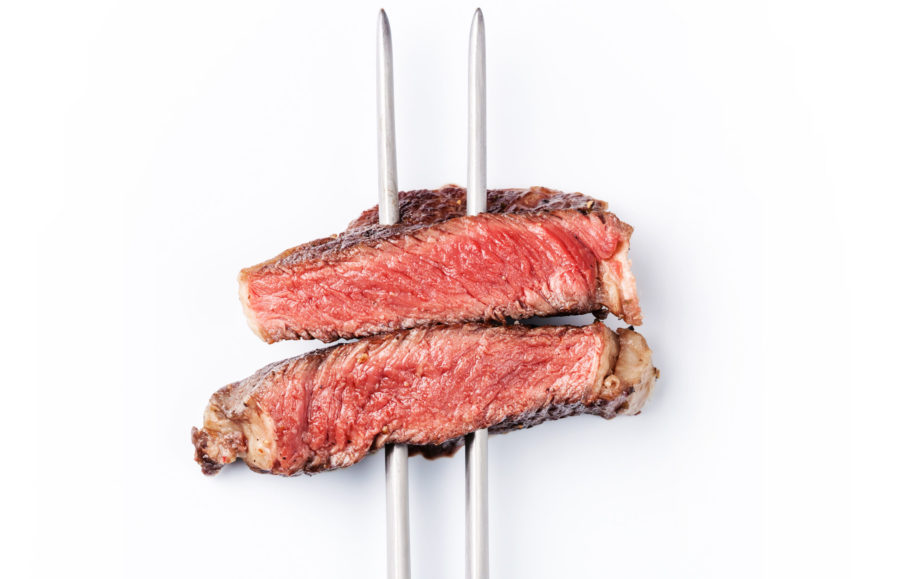Consuming beef in moderate quantities can be an important part of a healthy diet. Beef contains many nutrients such as iron, selenium, zinc, as well as vitamins B3, B6, and B12. Beef is a good source of quality protein and also contains carnosine and creatine, which are important for muscle and brain health.
Because beef is an animal product, does the diet of the cows impact the health benefits to the consumer?
What is Grass-Fed Beef and How Does it Differ from Conventional Beef?
The United States raises cattle differently than some other countries. For the first 7-9 months of a calf’s life, they drink their mother’s milk and free roam pastures, eating grass and other plants. Around the nine-month mark, conventional cattle are often moved to feedlots. These feedlots confine the cattle into stalls so they can feed them more easily and rapidly fatten the livestock for quicker turnaround to the slaughterhouse. This is achieved by feeding grain-based diets such as corn or soy. Sometimes the cows may also receive dried grass as a supplement. They live like this for a few months before they are ready for processing.
Most beef in conventional grocery stores is grain-fed. While not necessarily denoted on the packaging, this is standard practice. The beef you are accustomed to eating most likely comes from grain-fed cows.
Grass-fed beef does not have a standard definition but refers to cows whose primary diet is grass. This does not necessarily indicate that they are free roaming pasture cows, simply that their primary food source is grass instead of grain.
Are There Benefits to Choosing Grass-Fed Beef?
Grass-fed beef is higher in some nutrients than grain-fed cattle. According to Healthline, grass-fed beef contains a higher concentration of vitamin E and other antioxidants. It also has carotenoid precursors to vitamin A such as beta carotene. Mayo Clinic reports that grass-fed beef consists of more heart-healthy components than the conventional counterpart, such as two to six times more omega 3 fatty acids, linoleic acid and less total fat.
The Verdict
While there are some benefits to choosing grass-fed over grain-fed beef, there may be other factors to consider in your decision.
Grain-fed meat is readily available in conventional grocery stores. Grass-fed beef is sometimes harder to find. Farmers’ markets and specialty and whole food stores are more likely to carry these products. In addition, the cost for grass-fed beef may be greater than that of grain-fed, which may be a determining factor for families on a budget. The meat tends to have a slightly different flavor and texture. For those that routinely eat grain-fed beef, it may be more difficult to make the switch to something new.
Whether you opt for grain-fed or grass-fed meat or a combination thereof, you will receive some benefits from eating any beef in moderation. The most important part of a healthy diet is eating primarily whole natural foods.
RELATED ARTICLES:
8 Amazing Amazon Finds For Your Next Meal Prep
How Air Purifiers Can Help Clean Your Air
Ted Talks: Will I Win the Food Fight?

